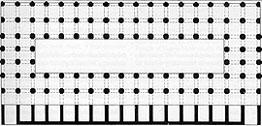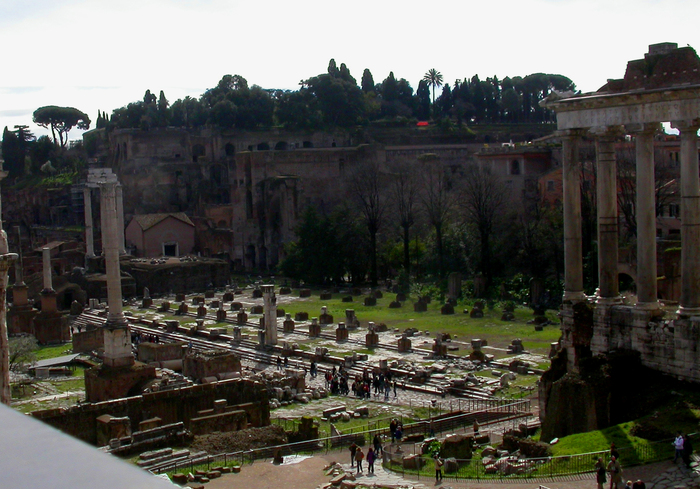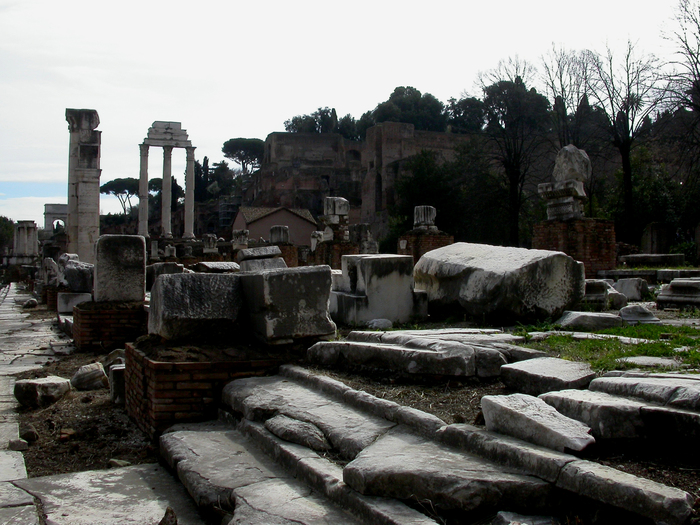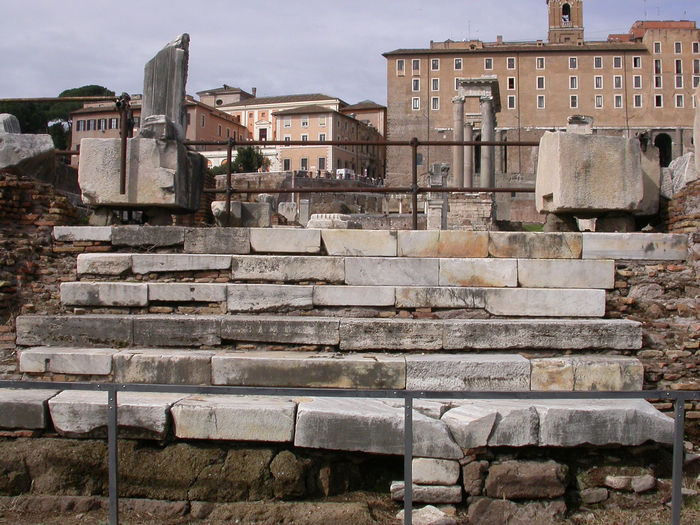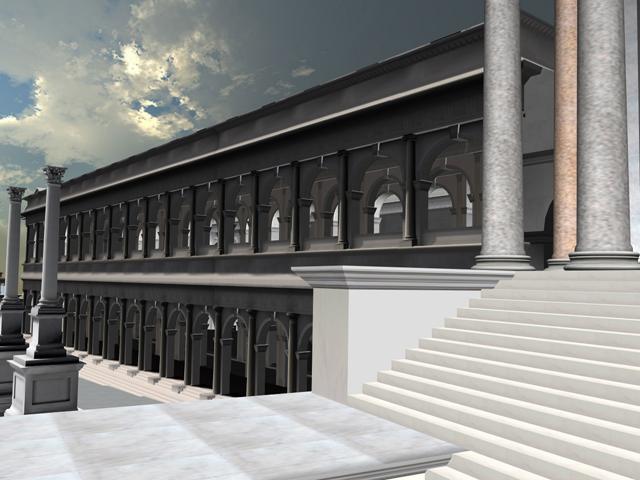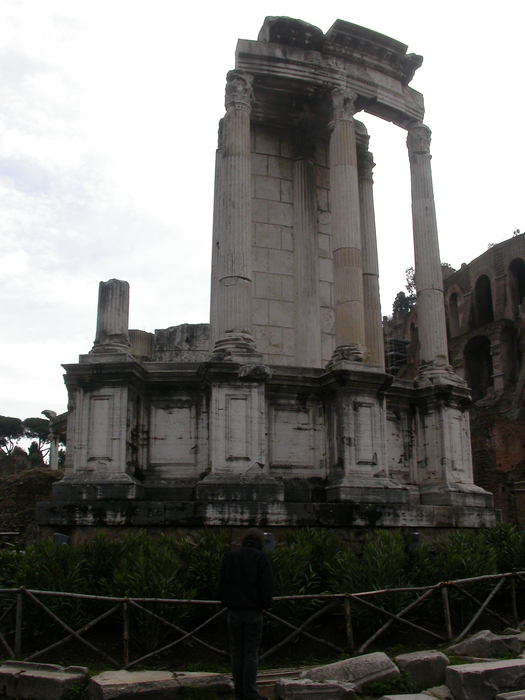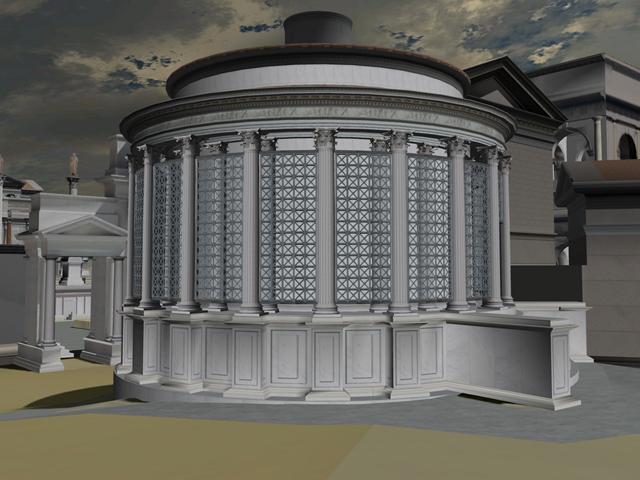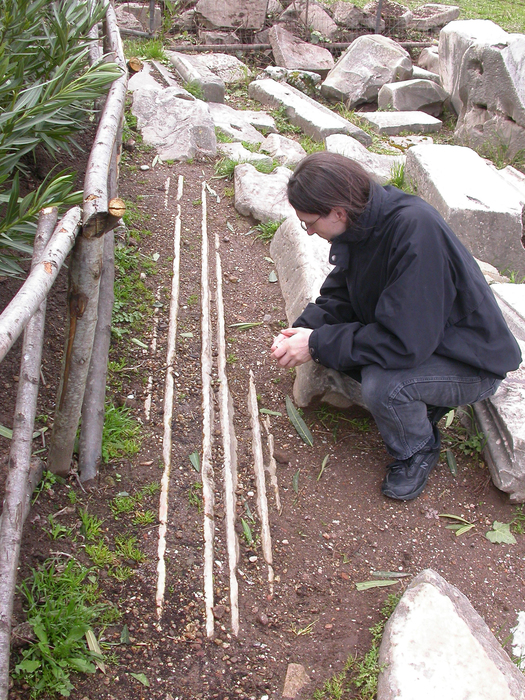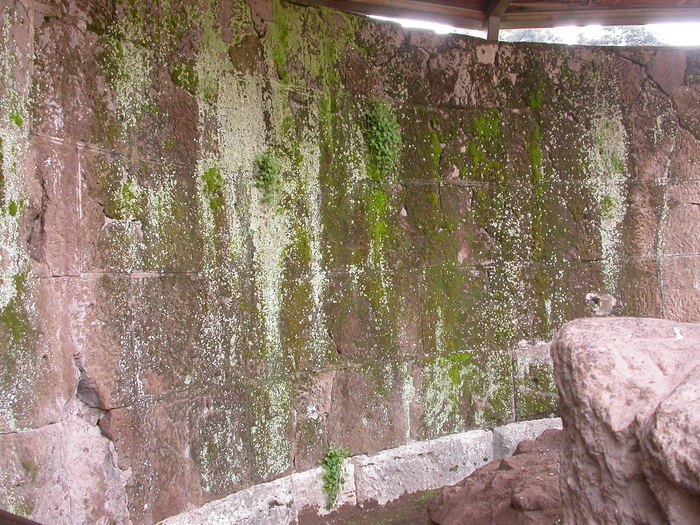The remains of the Basilica Julia is the next building along the Via Sacra. A basilica, in Roman architecture, was a roofed public building. The building was started in 54 B.C. by Julius Caesar, paid for by the spoils from the Gallic war. It was completed by Augustus Caesar, but burned shortly therafter. It was reconstructed in 12 A.D., and again after the fire of 283 A.D.
The Basilica housed the civil law courts and tabernae (shops), and provided space for government offices and banking. In the first century, it also was used for sessions of the Centumviri (Court of the Hundred), who presided over matters of inheritance.
The original plans for the building have been found, and look something like this:
